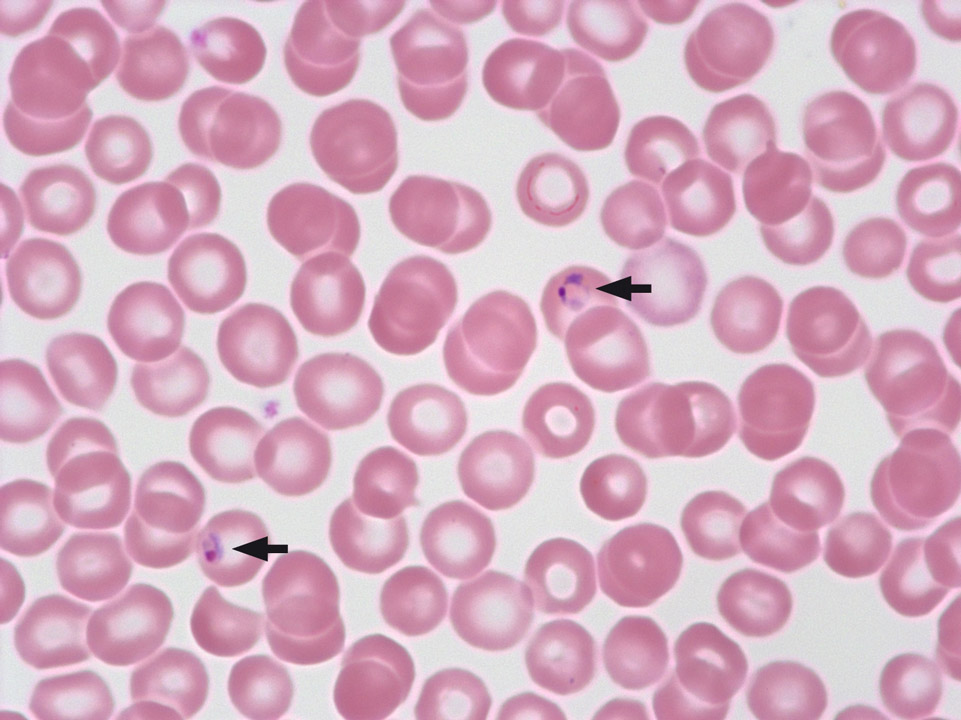Cell image gallery
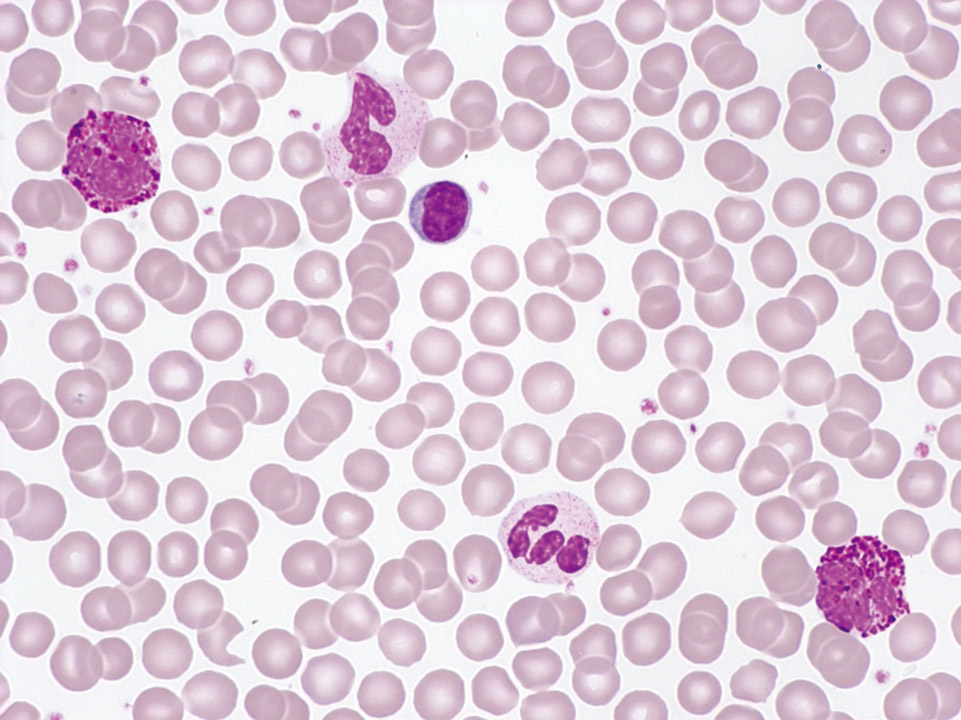
The peripheral blood (May-Grünwald-Giemsa stain) of a patient shows as an incidental finding leukocytosis with left shift up to myelocytes, basophilia and mild thrombocytosis. CML was suspected and later confirmed by cytogenetic demonstration of the Ph1.
<p>The peripheral blood (May-Grünwald-Giemsa stain) of a patient shows as an incidental finding leukocytosis with left shift up to myelocytes, basophilia and mild thrombocytosis. CML was suspected and later confirmed by cytogenetic demonstration of the Ph1.</p>
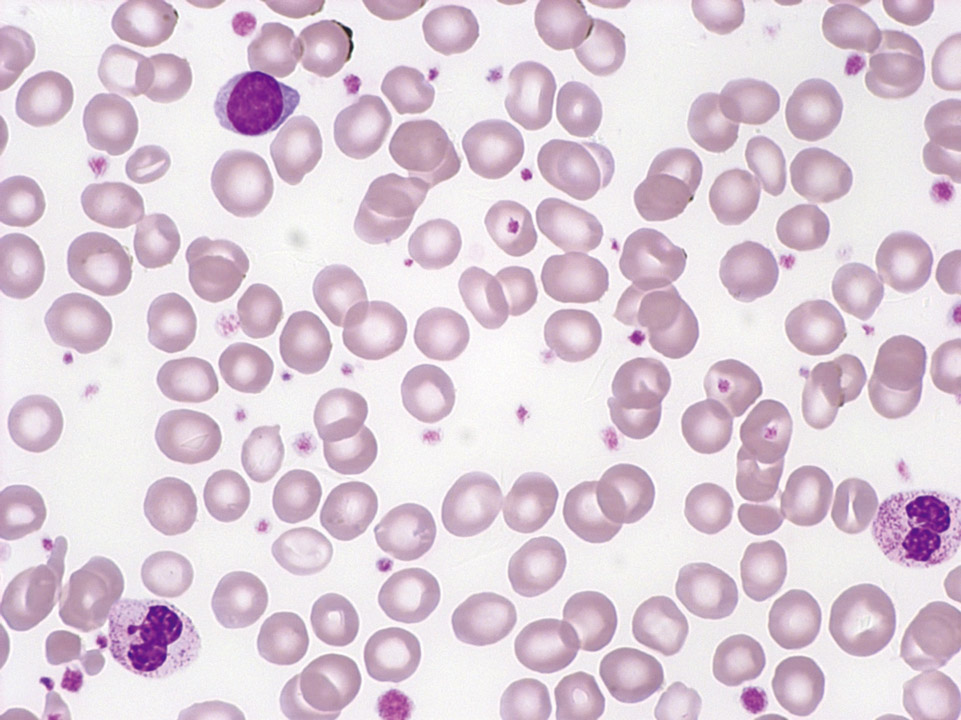
Peripheral blood (May-Grünwald-Giemsa stain) of a patient with ET showing an isolated thrombocytosis. A JAK2 mutation was detected by molecular biological techniques. The BCR-ABL fusion gene was not found.
<p>Peripheral blood (May-Grünwald-Giemsa stain) of a patient with ET showing an isolated thrombocytosis. A JAK2 mutation was detected by molecular biological techniques. The BCR-ABL fusion gene was not found.</p>
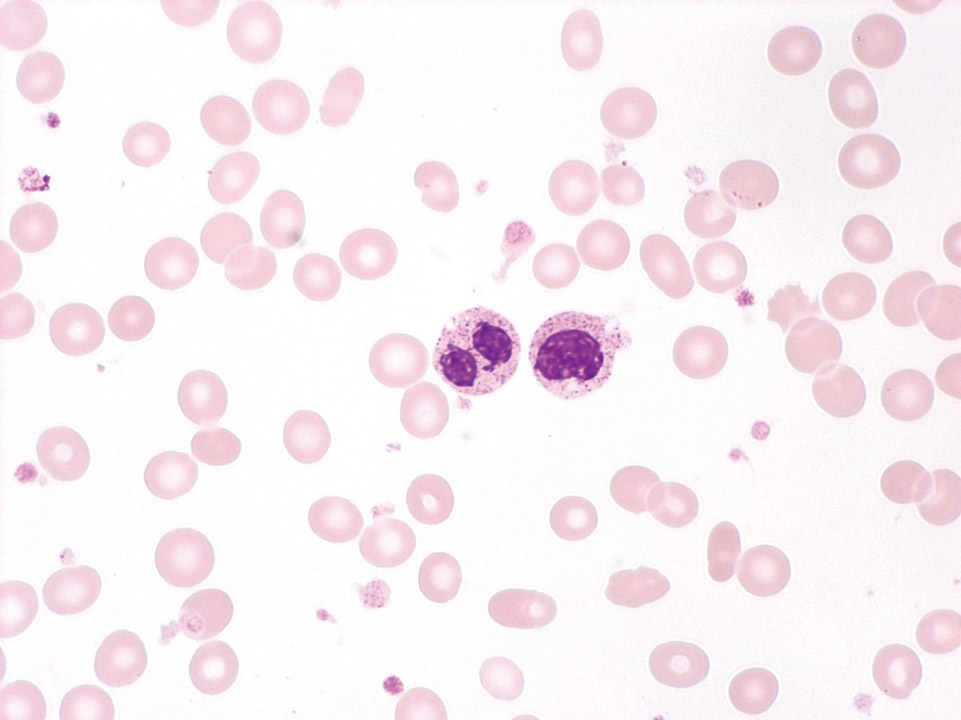
Peripheral blood (May-Grünwald-Giemsa stain) of a patient with MDS: on the left a pseudo-Pelger-Huet cell, on the right a dysplastic metamyelocyte. Anaemia and atypical platelets are also present. After peripheral blood and bone marrow analysis the diagnosis of refractory anaemia with excess of blasts (RAEB-1) was made.
<p>Peripheral blood (May-Grünwald-Giemsa stain) of a patient with MDS: on the left a pseudo-Pelger-Huet cell, on the right a dysplastic metamyelocyte. Anaemia and atypical platelets are also present. After peripheral blood and bone marrow analysis the diagnosis of refractory anaemia with excess of blasts (RAEB-1) was made.</p>
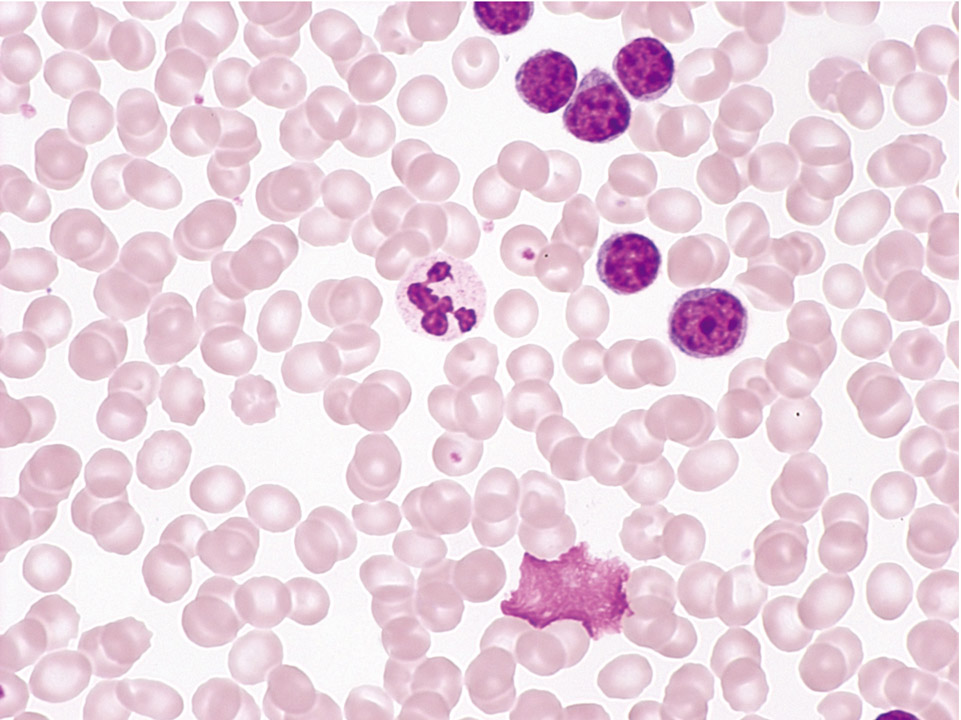
Peripheral blood (May-Grünwald-Giemsa stain) showing a typical B-CLL with an elevated lymphocyte count, normal granulocyte and platelet counts and normal red blood cells.
<p>Peripheral blood (May-Grünwald-Giemsa stain) showing a typical B-CLL with an elevated lymphocyte count, normal granulocyte and platelet counts and normal red blood cells.</p>
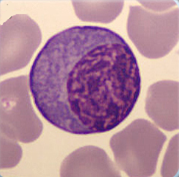
Cell description:
Size: up to 20 µm
Nucleus: eccentric with coarsely clumped chromatin, often clock-face chromatin pattern
Cytoplasm: strongly basophilic cytoplasm with apparent less basophilic Golgi zone adjacent to the nucleus
<p>Cell description: </p> <p>Size: up to 20 µm </p> <p>Nucleus: eccentric with coarsely clumped chromatin, often clock-face chromatin pattern </p> <p>Cytoplasm: strongly basophilic cytoplasm with apparent less basophilic Golgi zone adjacent to the nucleus</p>
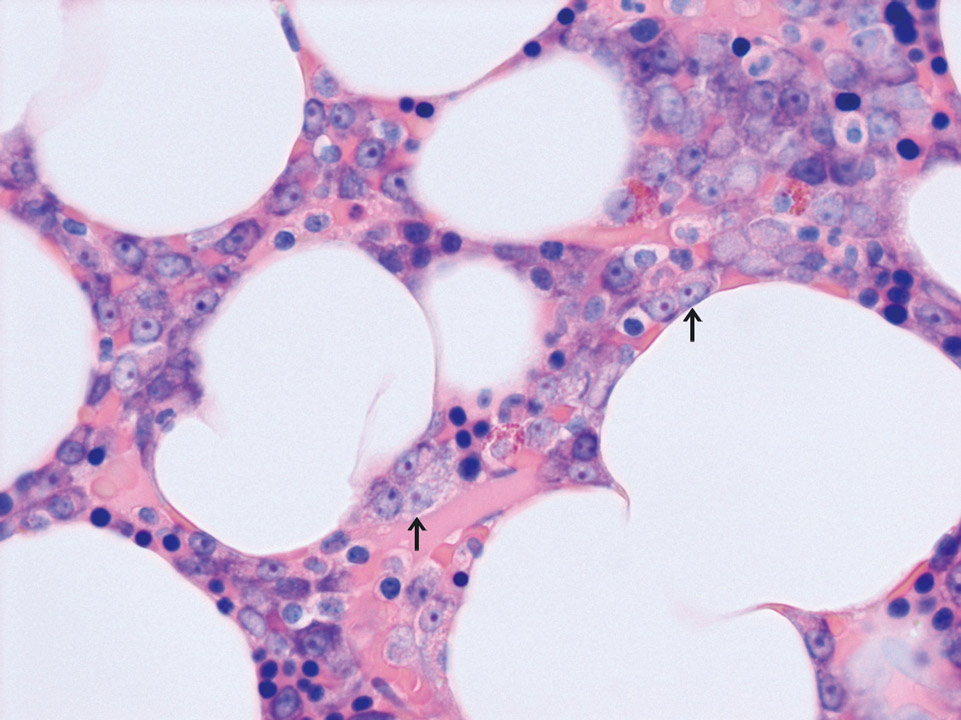
Bone marrow histology (Giemsa stain) of a patient with multiple myeloma showing groups (nests) of plasma cells (->) in atypical locations. Normal plasma cells are usually located close to the blood vessels.
<p>Bone marrow histology (Giemsa stain) of a patient with multiple myeloma showing groups (nests) of plasma cells (->) in atypical locations. Normal plasma cells are usually located close to the blood vessels.</p>
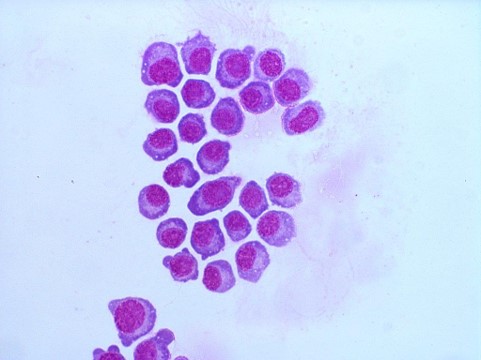
Plasma cells in a cytospin prepared from cerebrospinal fluid (CSF) of the patient with multiple myeloma, May-Gruenwald Giemsa stain
<p>Plasma cells in a cytospin prepared from cerebrospinal fluid (CSF) of the patient with multiple myeloma, May-Gruenwald Giemsa stain</p>
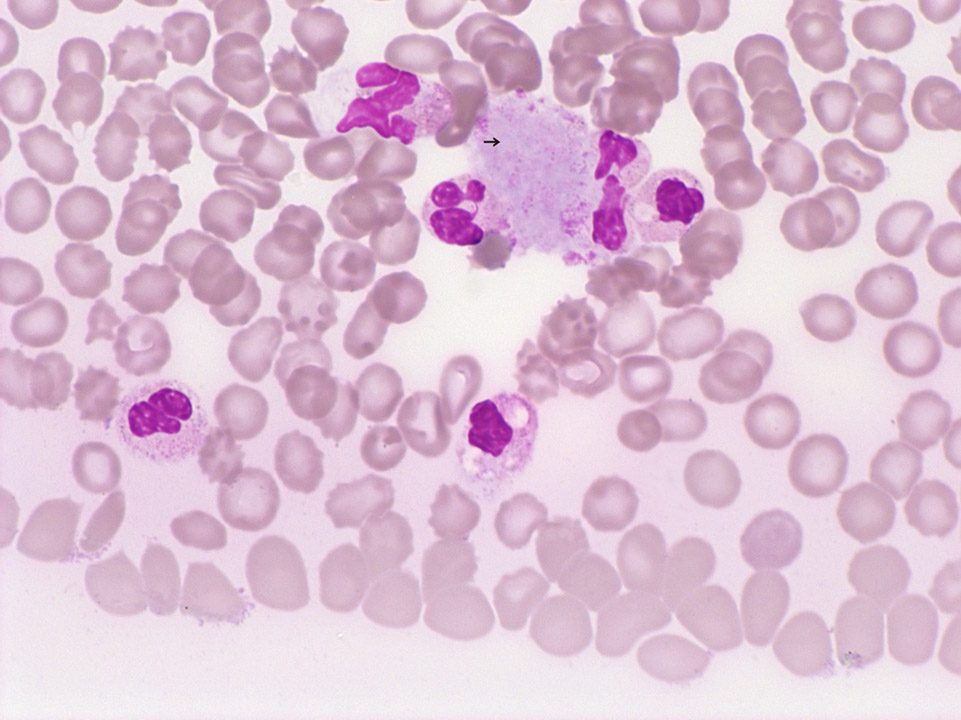
It is of utmost importance to always report a correct value for the platelet concentration. When detecting thrombocytopenia the laboratory should therefore double-check that it is not due to platelet aggregates (->) (pseudo-thrombocytopenia). In a haematology analyser they are usually automatically identified and flagged. In a blood film they are mostly located at the feather edge or the lateral edges.
<p>It is of utmost importance to always report a correct value for the platelet concentration. When detecting thrombocytopenia the laboratory should therefore double-check that it is not due to platelet aggregates (->) (pseudo-thrombocytopenia). In a haematology analyser they are usually automatically identified and flagged. In a blood film they are mostly located at the feather edge or the lateral edges.</p>
